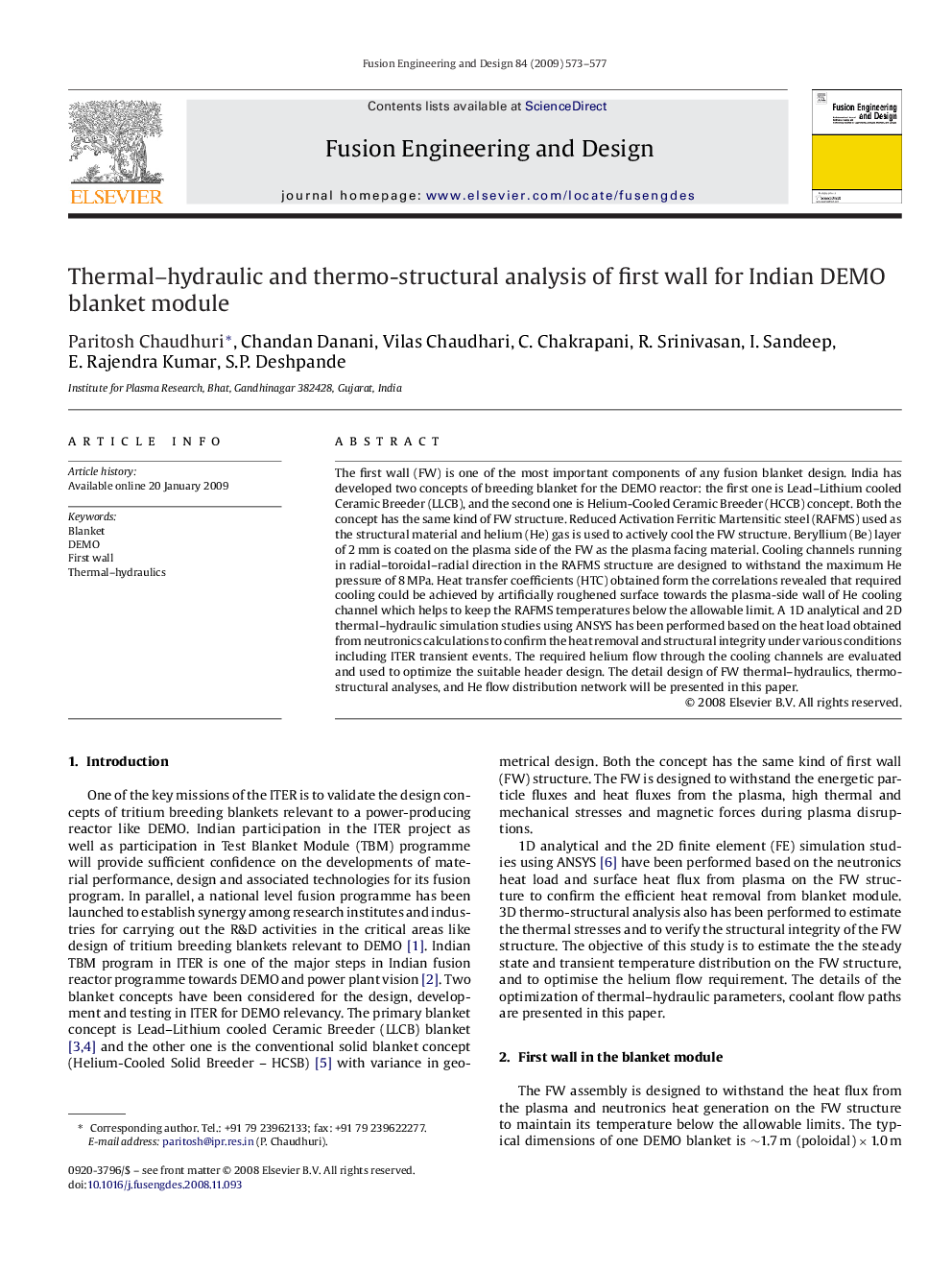| Article ID | Journal | Published Year | Pages | File Type |
|---|---|---|---|---|
| 273412 | Fusion Engineering and Design | 2009 | 5 Pages |
The first wall (FW) is one of the most important components of any fusion blanket design. India has developed two concepts of breeding blanket for the DEMO reactor: the first one is Lead–Lithium cooled Ceramic Breeder (LLCB), and the second one is Helium-Cooled Ceramic Breeder (HCCB) concept. Both the concept has the same kind of FW structure. Reduced Activation Ferritic Martensitic steel (RAFMS) used as the structural material and helium (He) gas is used to actively cool the FW structure. Beryllium (Be) layer of 2 mm is coated on the plasma side of the FW as the plasma facing material. Cooling channels running in radial–toroidal–radial direction in the RAFMS structure are designed to withstand the maximum He pressure of 8 MPa. Heat transfer coefficients (HTC) obtained form the correlations revealed that required cooling could be achieved by artificially roughened surface towards the plasma-side wall of He cooling channel which helps to keep the RAFMS temperatures below the allowable limit. A 1D analytical and 2D thermal–hydraulic simulation studies using ANSYS has been performed based on the heat load obtained from neutronics calculations to confirm the heat removal and structural integrity under various conditions including ITER transient events. The required helium flow through the cooling channels are evaluated and used to optimize the suitable header design. The detail design of FW thermal–hydraulics, thermo-structural analyses, and He flow distribution network will be presented in this paper.
